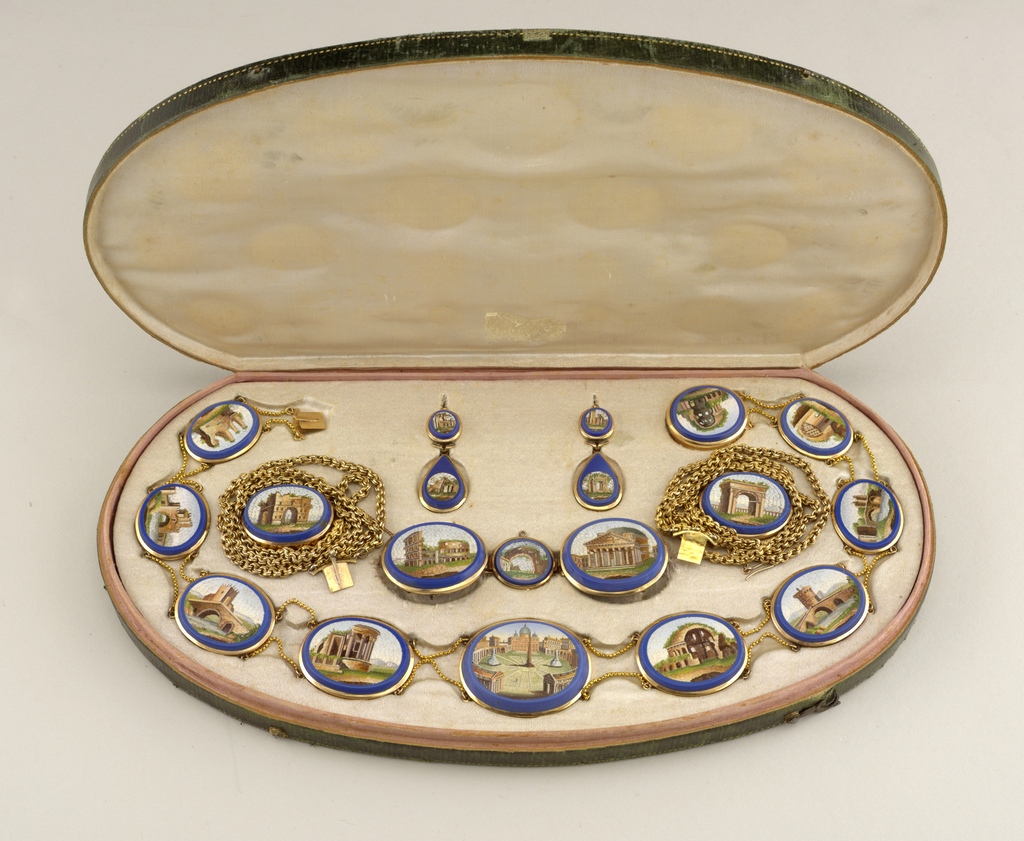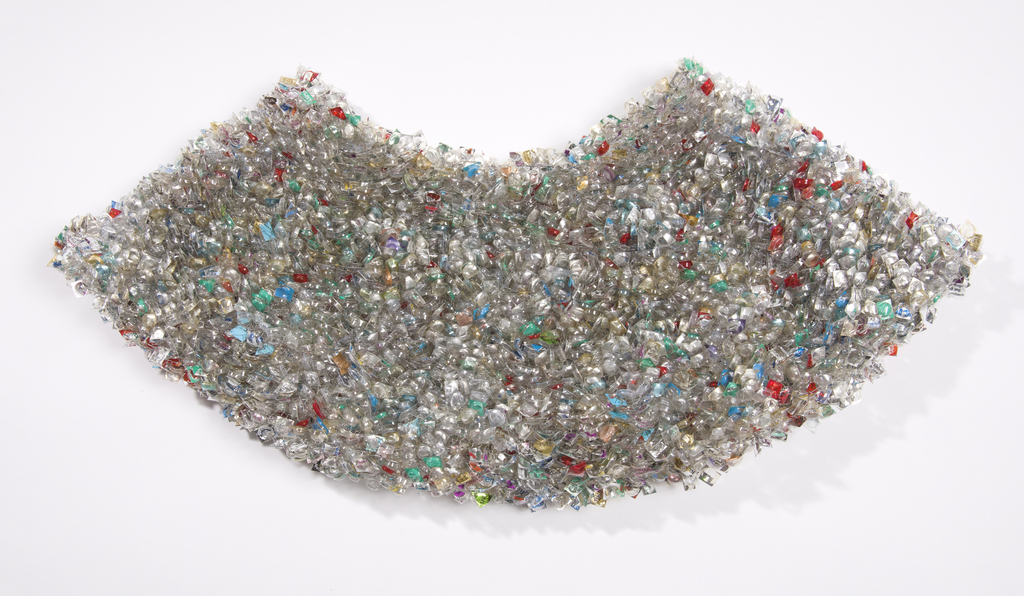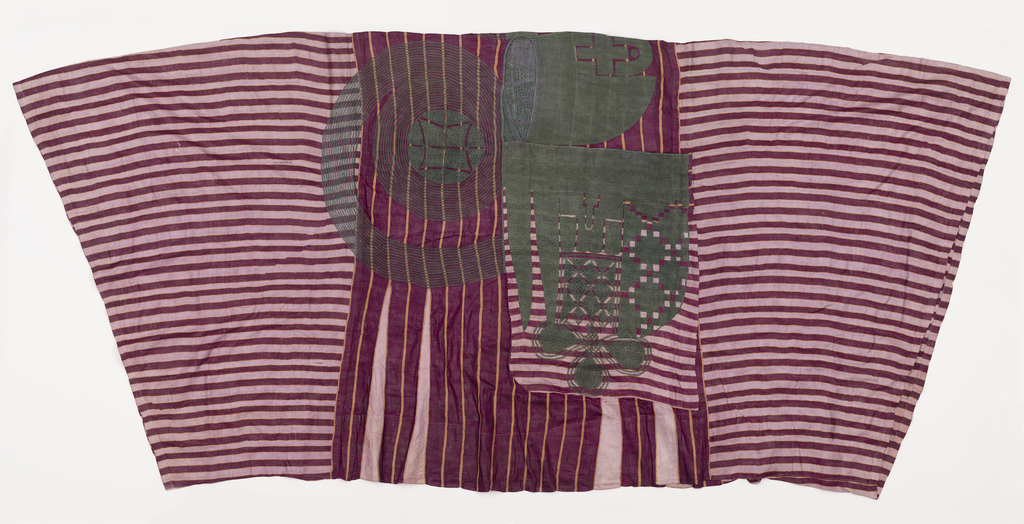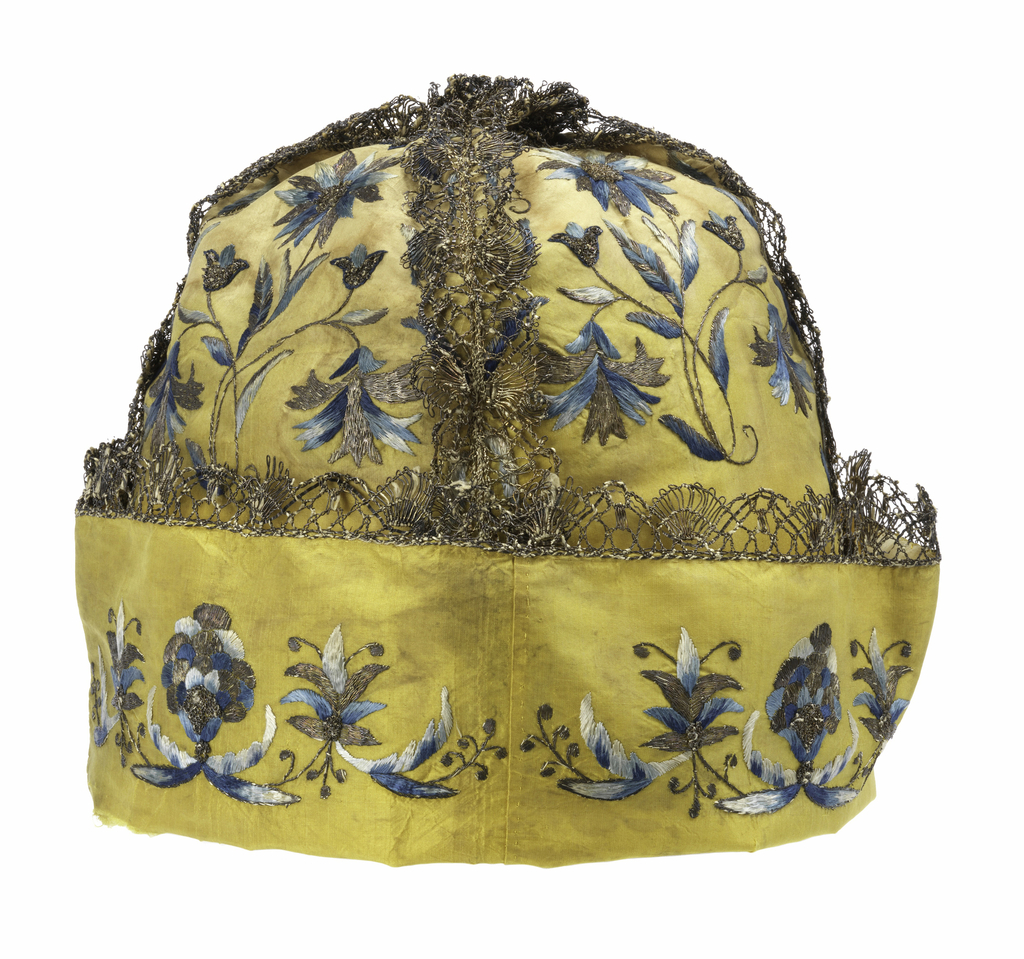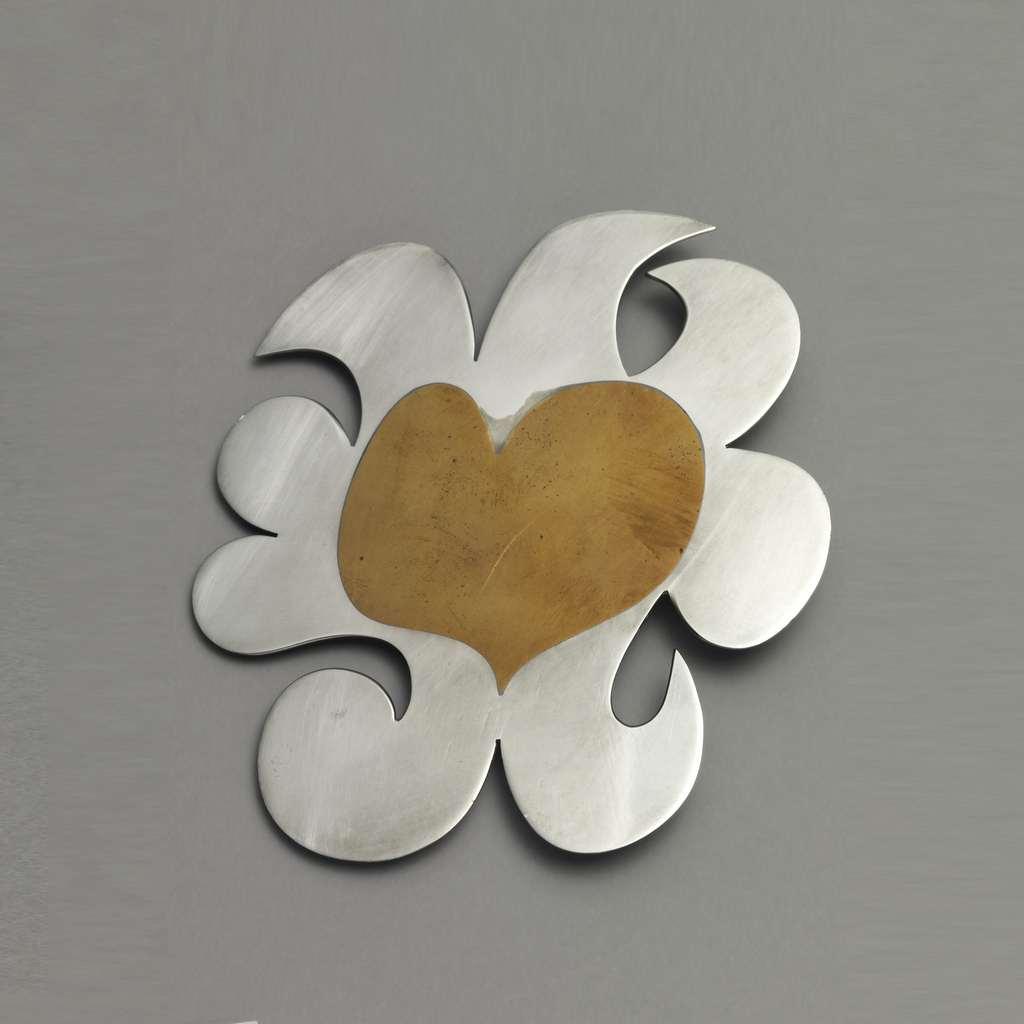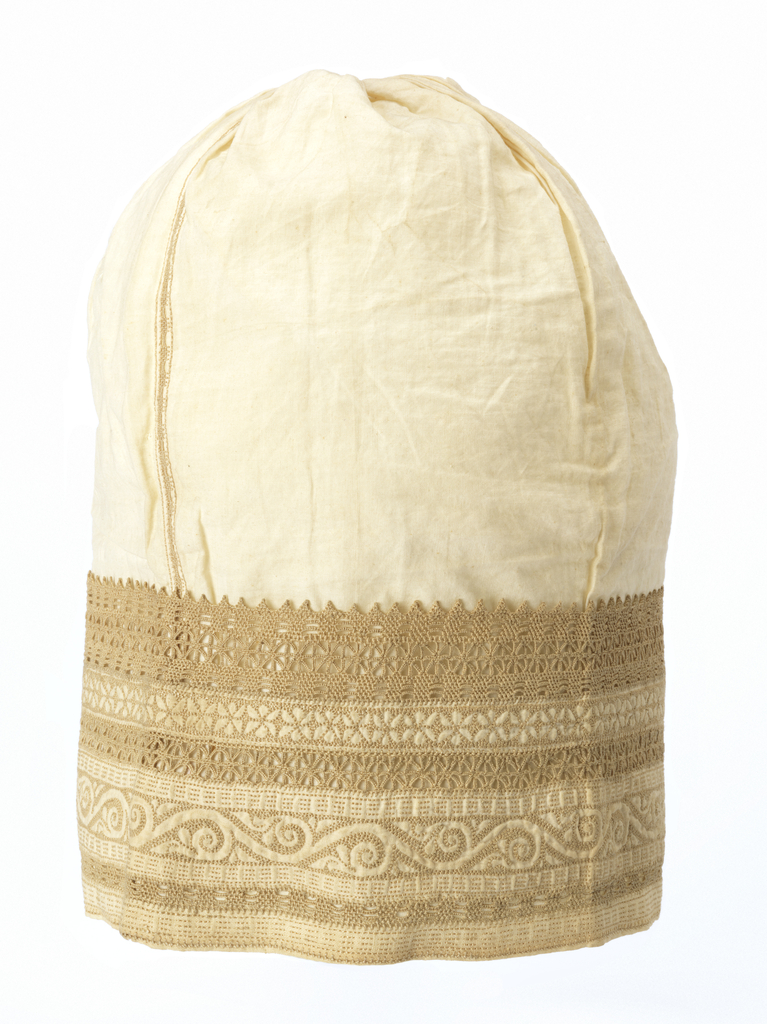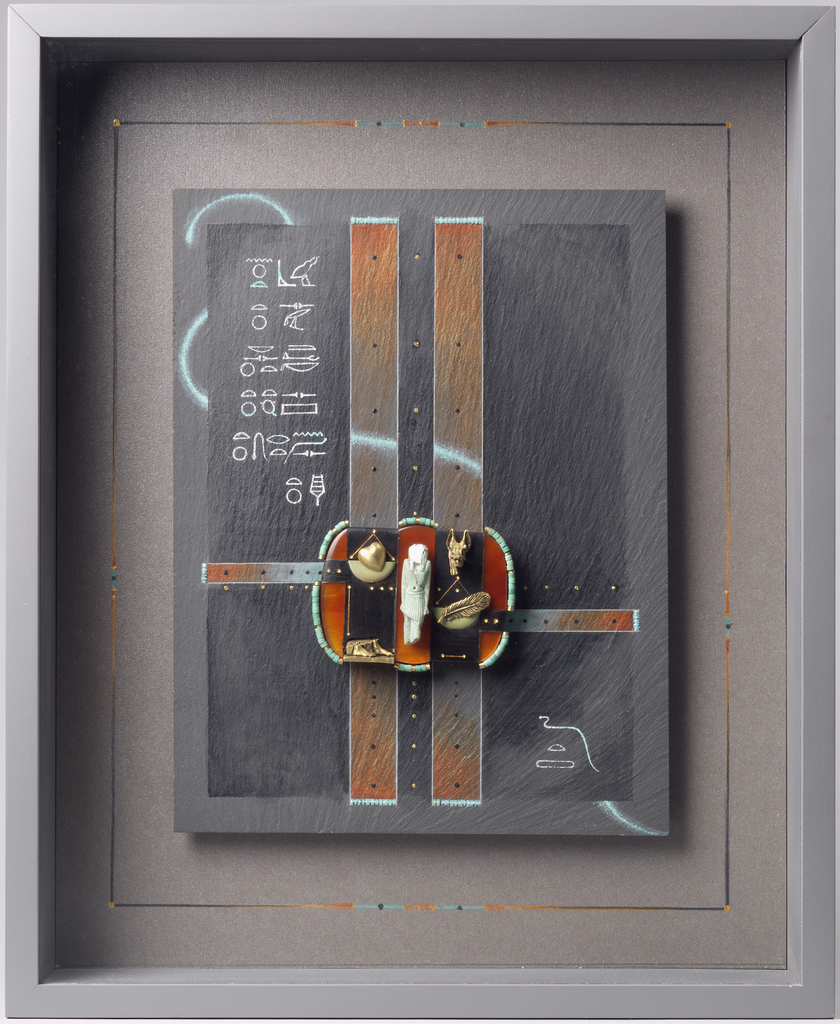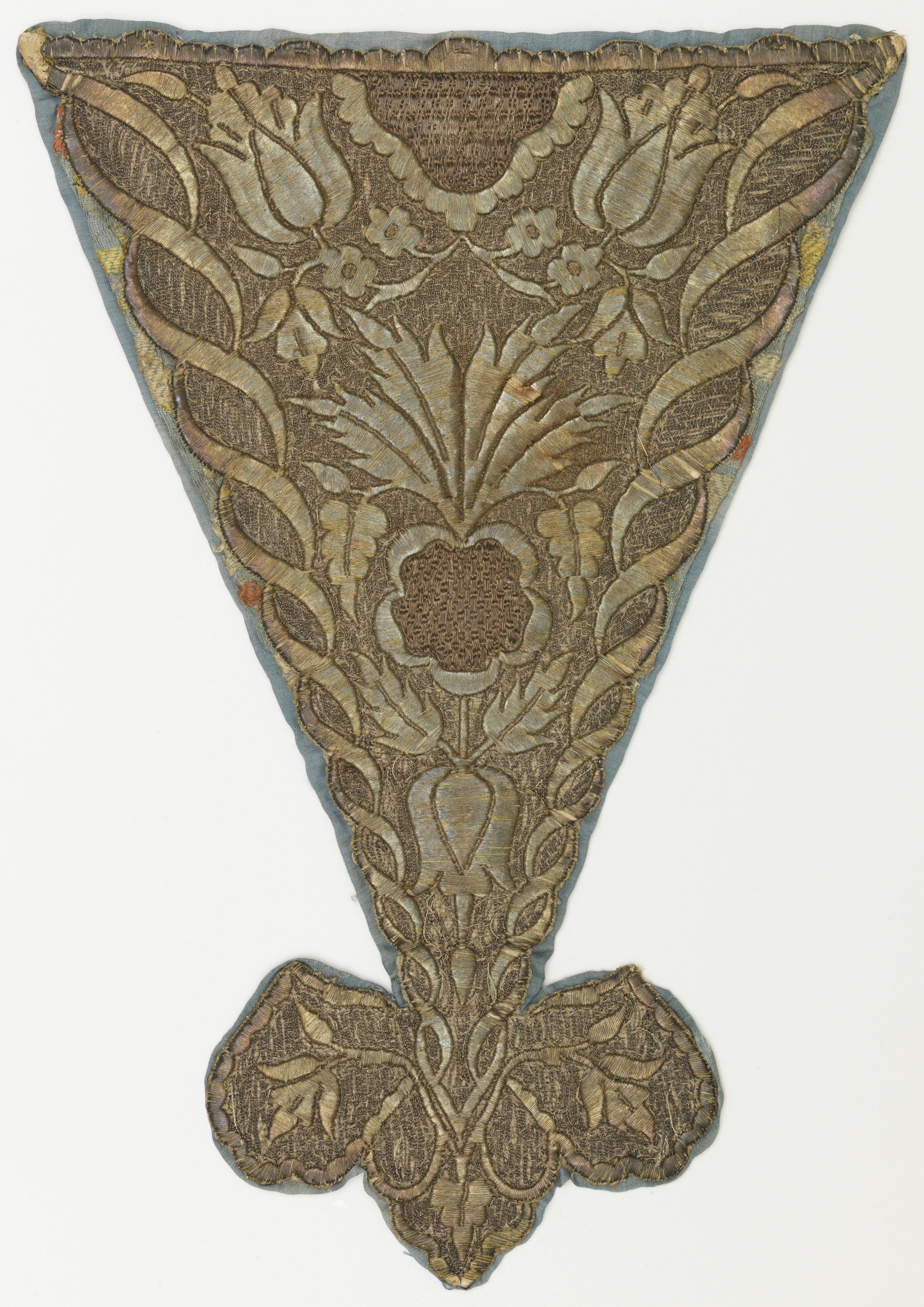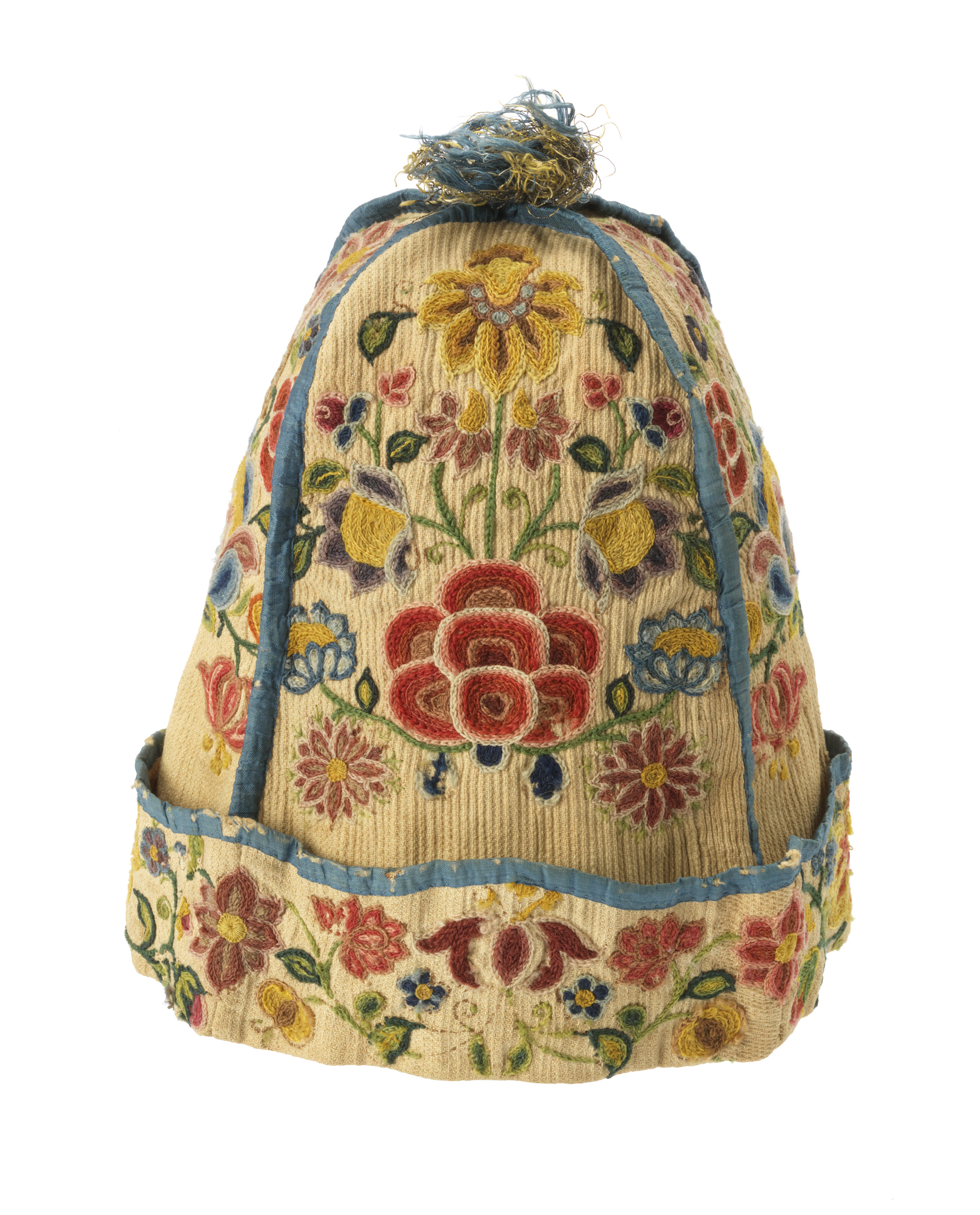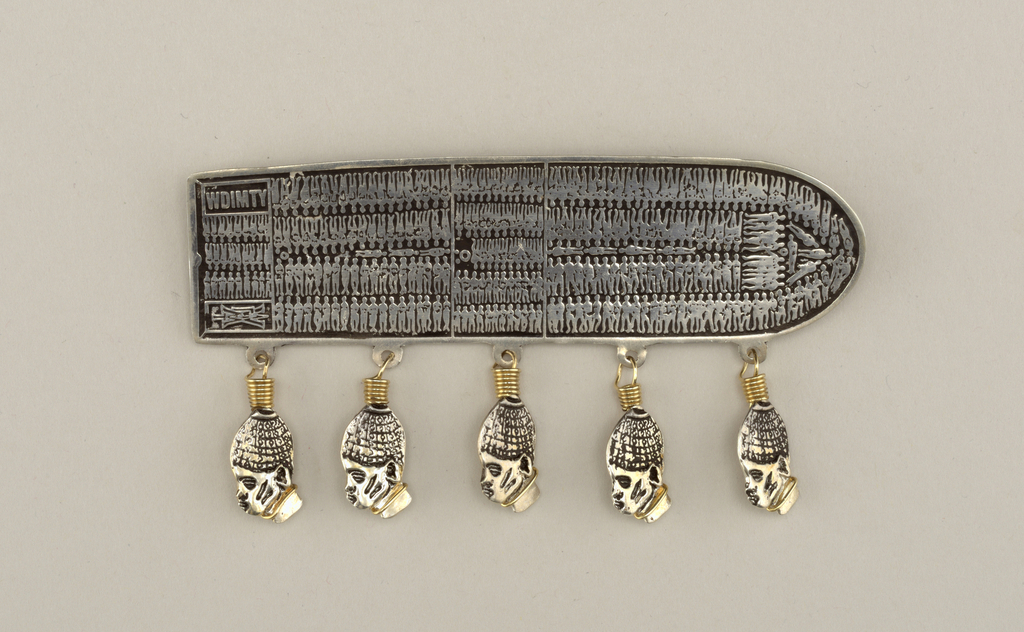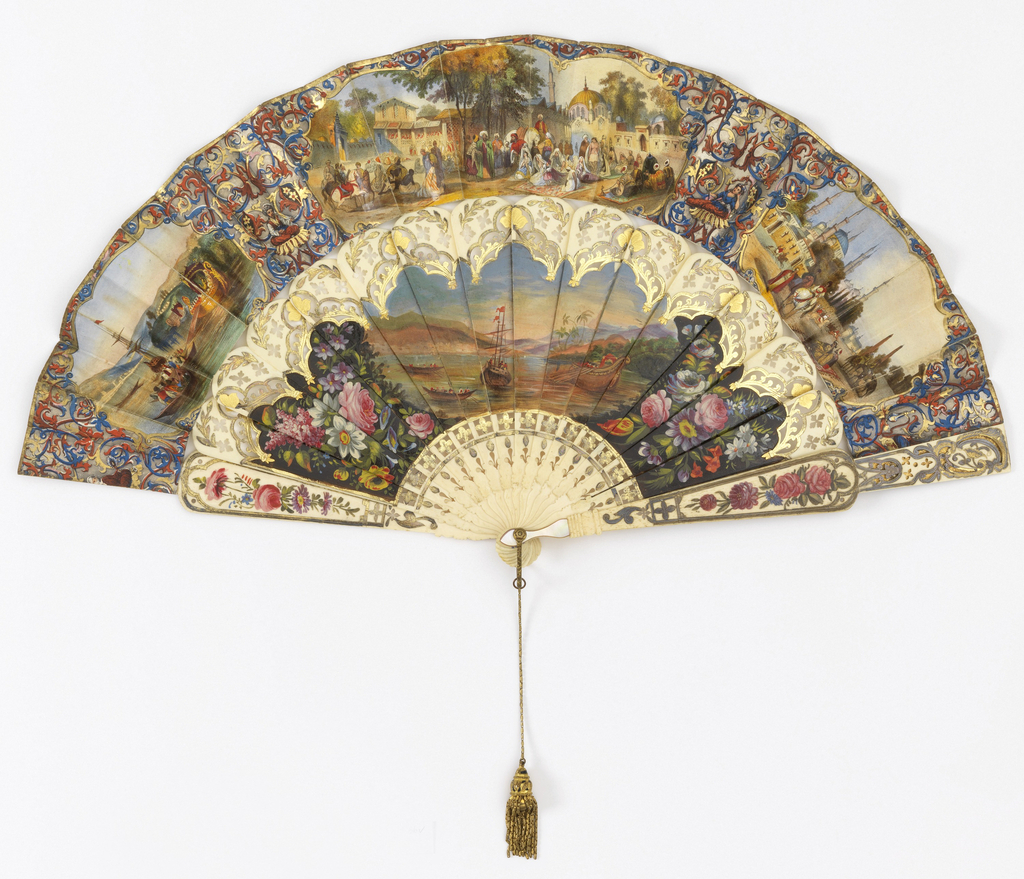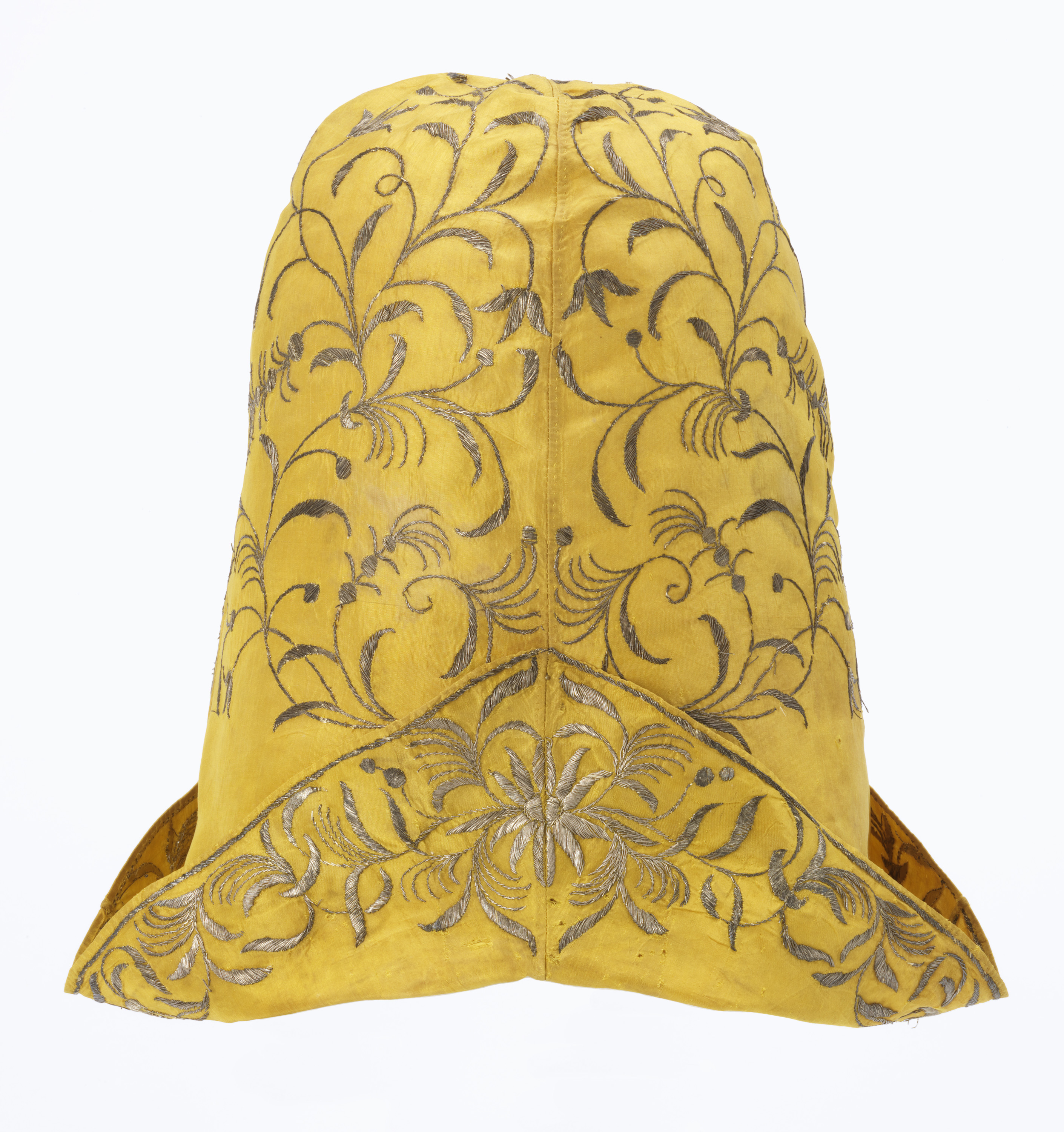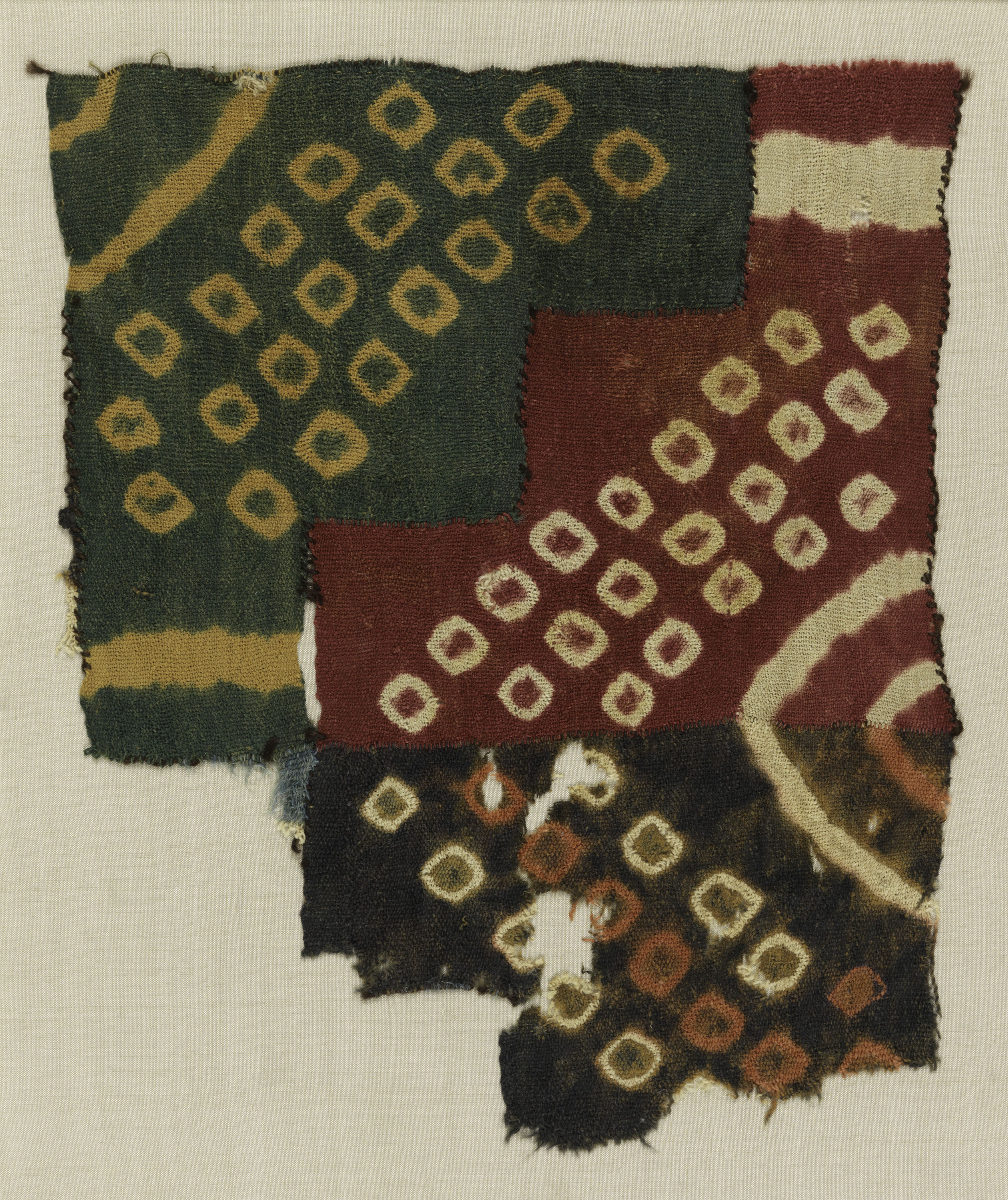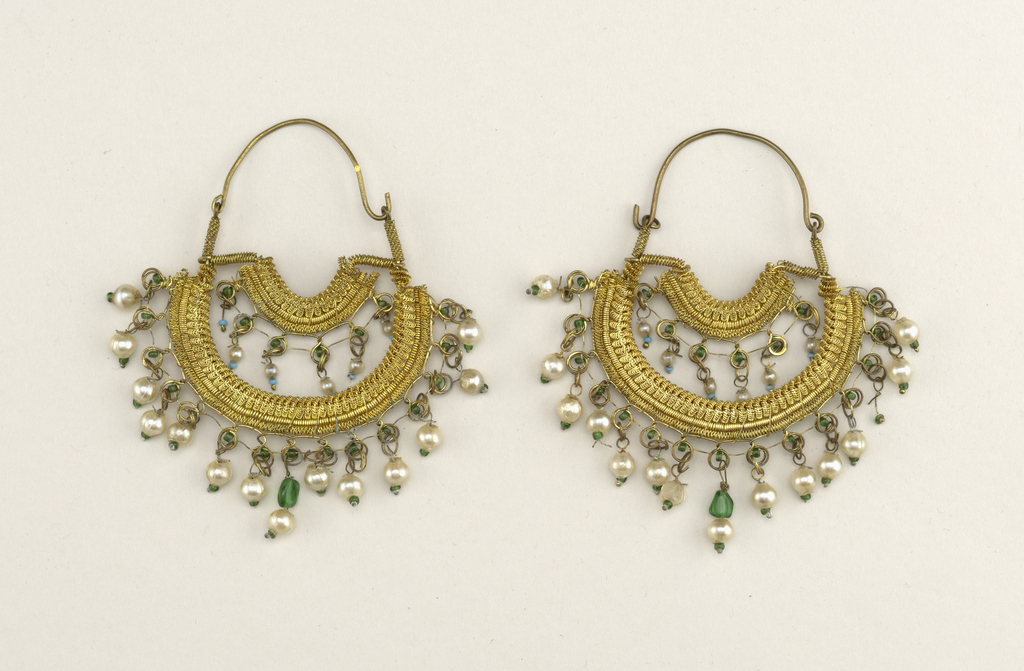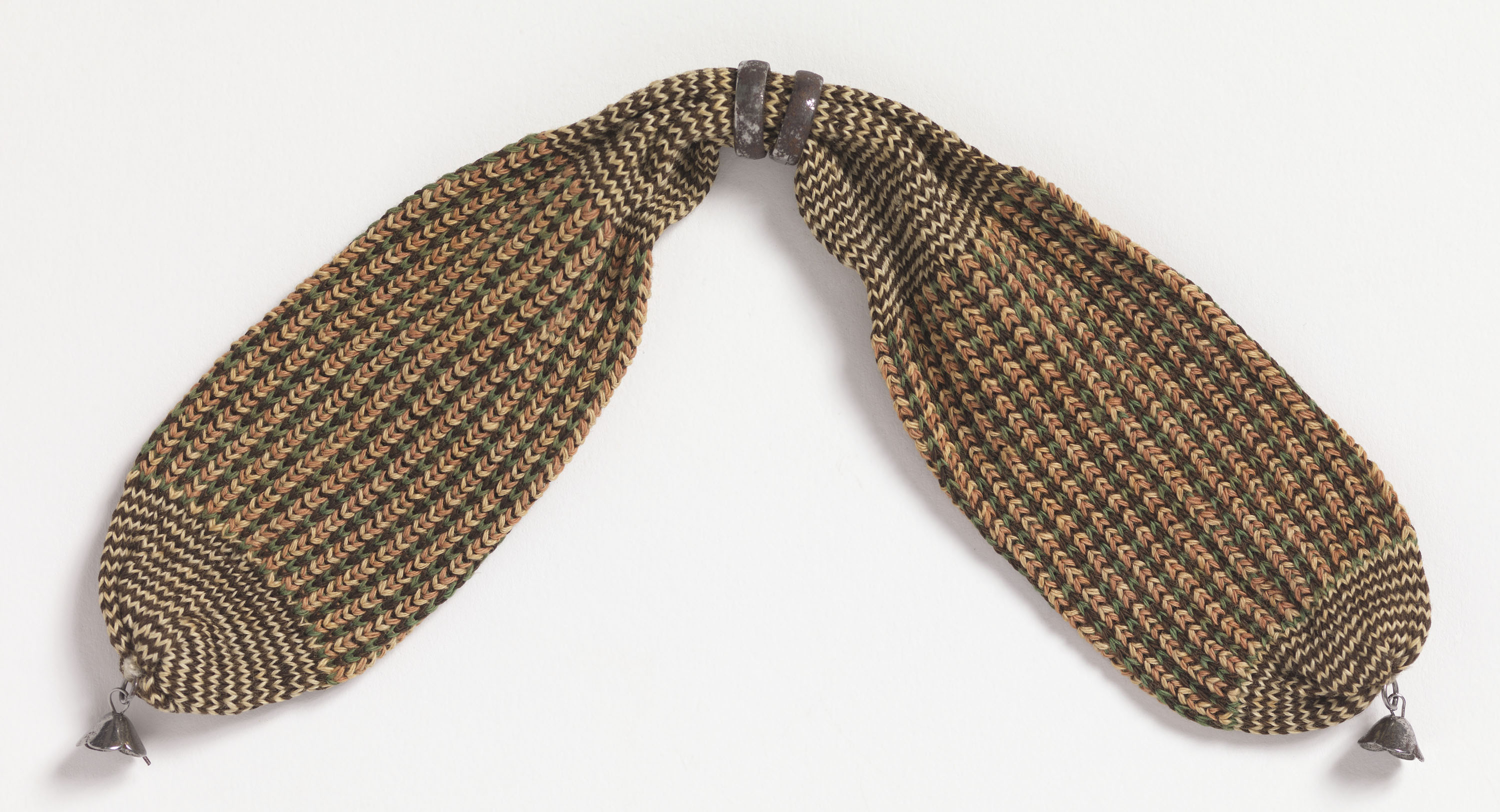This jewelry parure, or suite, is indicative of a custom that was unique to its time and class. The Grand Tour was a traditional trip taken by upper class young men and women, with the goal of exposing them to the artistic riches of France and Italy, thereby completing their education. These long sojourns became...
At first glance, this necklace catches the light and each individual bead shimmers like a mirror. Upon closer inspection, however, it is discovered that instead of beads, it is made up of small square pieces of medical pill blister packages, each loosely woven on thin, metal wire. This necklace was designed by Verena Sieber-Fuchs, a...
Prestige robes with flowing, wide sleeves and elaborate embroidery were worn by aristocratic Fulani, Hausa, and Nupe men. Their use is primarily associated with the 19th-century Sokoto Caliphate, centered in northern Nigeria, and their distribution is to key Islamic trade routes throughout the region. Their lavish use of costly hand-woven silk proclaimed the wearer’s wealth...
This nightcap consists of four embroidered sections of cloth joined and bordered with braided lace made of silver-wrapped thread. The lower edge, embroidered on the opposite side, is folded up to form a brim. The style of the embroidery, which also uses silver-wrapped thread, is called chinoiserie (Chinese-esque), and includes imaginary, exotic-looking flowers that represent...
This brooch, designed by artist Carol Summers, is a three-dimensional representation of the big, bold wood-cut prints for which he was famous. Summers, who passed away on October 27th, 2016, trained at Bard College and the Art Students League in New York City, where he studied painting and printmaking. This brooch is unique in that...
The decoration on this cap, found only on the lower edge and the single seam, accents its simple design. Wigs were commonly worn in public in the seventeenth century, and many men had shaved heads. When the wig was removed, nightcaps were worn to protect the head from drafty interiors, even during the day. They...
Ever wonder what your jewelry does when you aren’t wearing it? This brooch by the British art jeweler and goldsmith Kevin Coates demonstrates Coates grappling with this question. When Coates creates a piece of jewelry he often also designs an elaborate and beautiful housing for it to live in when not being worn, allowing the...
The stomacher was a necessary element of a woman’s daily wardrobe in the eighteenth century. Often elaborately decorated with embroidery, ribbon bows, and metal threads, the triangular shaped accessory covered the open front of the robe à la française. As the fundamental style of dress during this period, these gowns were characterized by their front...
This 18th-century hat, called a nightcap, is decorated with crewel, a wool yarn often used to embroider linen. Known as crewelwork, this technique was frequently applied to nightcaps, where it was worked into bouquets of exotic and imaginary flowers and winding stems. Similar motifs also appeared on colorfully dyed chintz, an Indian cotton textile that...
Born in the Bronx, Phyllis Bowdwin is an activist, writer, educator, mixed-media artist, and designer. Inspired by her African ancestry, Bowdwin made this brooch that depicts in diagrammatic form the hull of a slave ship and the arrangement of its tightly packed human cargo during the Middle Passage. In this version, five heads of African...
This fan’s printed scenes of the Ottoman Empire are after the English architect and landscape painter Thomas Allom (1804-1872), whose drawings were engraved and published in the 1840 book, Constantinople and the Scenery of the Seven Churches of Asia Minor. [1] The center image is of the Arut Bazaar, a female slave market in Constantinople....
This 18th-century hat is called a nightcap, but it probably was not worn to bed. A man would use this cap to keep his head warm when he removed his wig, since a wig required short hair or a shaved head. A wig was proper attire for men of almost any status in 18th century...
The wild and syncopated play of color and pattern in this tie-dyed textile from ancient Peru seems to counter the meticulous and steadied hand of the Andean weaver. The fabric was in fact specially woven in discreet, stepped-shaped units that were cut apart and re-assembled after being tie-dyed, mixing up the variously dyed sections. Several...
The English word filigree derives from the Latin filum, a thread, and grano, a grain or bead, through the Italian term filigrana. Filigree exists as a design technique even further back in antiquity than ancient Rome. While now a specialization, earlier jewelers, especially in Egypt, the Middle East, Italy, France and Spain, considered it part of...
Miser’s purses are oblong pouches primarily used to carry coins. The purses usually have center slit openings with pairs of sliding rings to secure coins in the purses’ ends, though sometimes clasp closures are used. The purses probably evolved from the 16th-century practice of storing coins in the toe of a stocking. Miser’s purses were...
